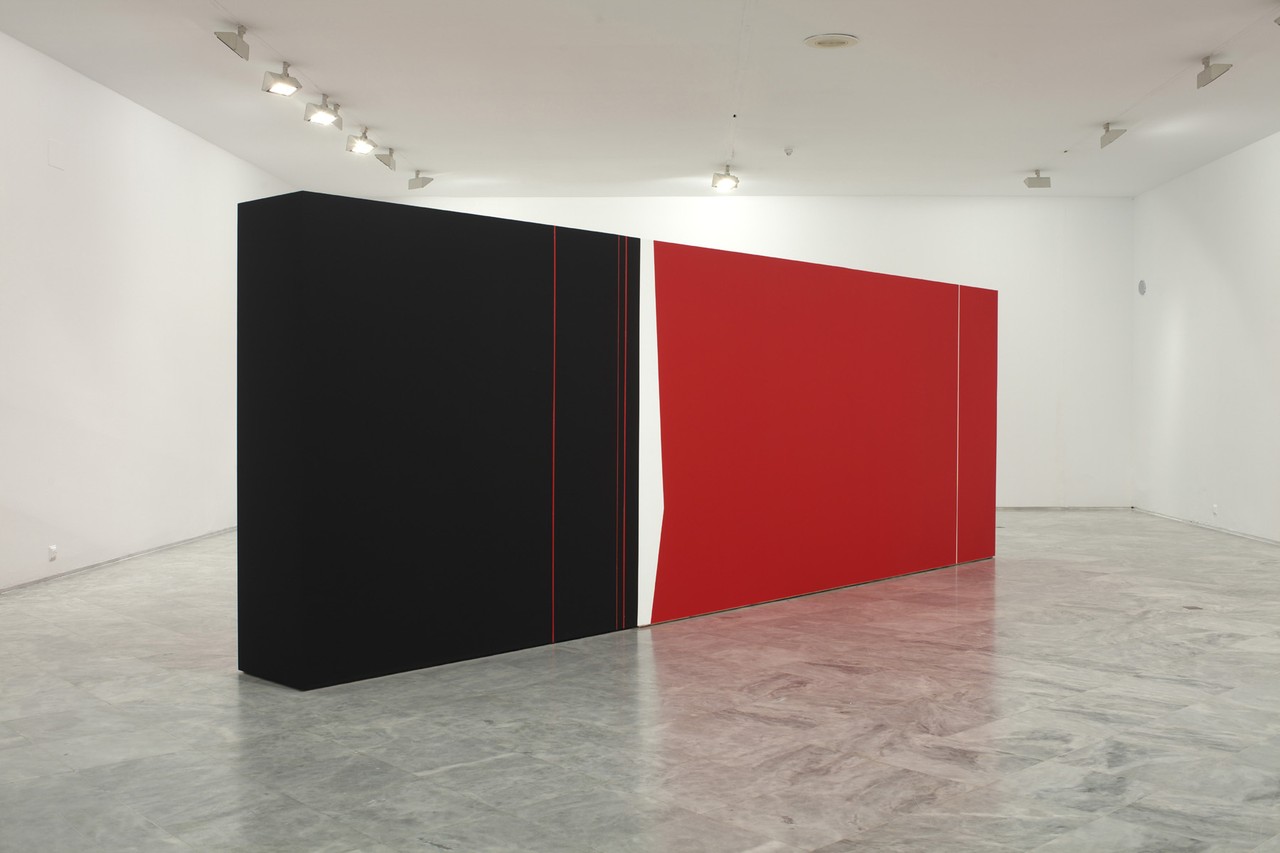José Soto
Color Fields
31 May - 30 Sep 2012
JOSÉ SOTO
Color Fields
31 May – 30 September 2012
Exhibition Session: Post-Painterly Abstraction
The artistic endeavors of José Soto Reyes (Seville, 1934), as drawing teacher, curator and exhibition designer, extend over more than four decades, but these tasks have painting as their nexus and stimulus.
His painting has to do with to the abstraction that began in New York at the end of the 1940s, especially with so-called color field painting, as conceived by Barnett Newman in particular. With him Soto shares an interest in color and pictorial space, and especially a desire: that painting should be about itself without seeking to describe, narrate or express. It is painting per se that must see to it that a material object, the picture, is substantiated as a work.
Soto has recourse to the language of line and plane, while preventing geometric rigor from truncating rhythm. He creates non-hierarchical frontal spaces in which exactitude coexists in a sort of tension with dynamism, with color cooperating tellingly in this. He emphasizes its interactivity in such a way that two neighboring fields reinforce one another in gentle contrast. The fine lines that seemingly divide these fields help, instead, to unify and lend rhythm to the picture surface.
In a prolonged dialogue with painting, Soto seeks after unusual nuances: colors that challenge the very idea of color and which make the surface of the picture come forward or cause it to pool in depth. Moreover, he applies color with a technique all his own, with gestures that recall stamping, leaving a trace that addresses sight as well as touch.
His work had a challenge pending: scale, the format capable of enveloping the viewer, in two or three dimensions. To this there responds the recent work exhibited in these galleries.
Color Fields
31 May – 30 September 2012
Exhibition Session: Post-Painterly Abstraction
The artistic endeavors of José Soto Reyes (Seville, 1934), as drawing teacher, curator and exhibition designer, extend over more than four decades, but these tasks have painting as their nexus and stimulus.
His painting has to do with to the abstraction that began in New York at the end of the 1940s, especially with so-called color field painting, as conceived by Barnett Newman in particular. With him Soto shares an interest in color and pictorial space, and especially a desire: that painting should be about itself without seeking to describe, narrate or express. It is painting per se that must see to it that a material object, the picture, is substantiated as a work.
Soto has recourse to the language of line and plane, while preventing geometric rigor from truncating rhythm. He creates non-hierarchical frontal spaces in which exactitude coexists in a sort of tension with dynamism, with color cooperating tellingly in this. He emphasizes its interactivity in such a way that two neighboring fields reinforce one another in gentle contrast. The fine lines that seemingly divide these fields help, instead, to unify and lend rhythm to the picture surface.
In a prolonged dialogue with painting, Soto seeks after unusual nuances: colors that challenge the very idea of color and which make the surface of the picture come forward or cause it to pool in depth. Moreover, he applies color with a technique all his own, with gestures that recall stamping, leaving a trace that addresses sight as well as touch.
His work had a challenge pending: scale, the format capable of enveloping the viewer, in two or three dimensions. To this there responds the recent work exhibited in these galleries.

